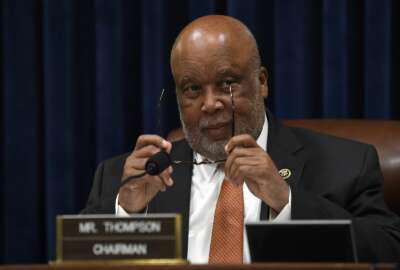
‘Unprecedented level’ of disasters strain FEMA’s recovery workforce
The Federal Emergency Management Agency faces hiring challenges that have constrained its ability to meet its mission.
Much like other parts of the Department of Homeland Security, the Federal Emergency Management Agency faces hiring challenges that have constrained its ability to meet its mission.
FEMA’s workforce shortages, combined with an increasing number of natural disasters in the United States and a lack of permanent leadership at DHS, have raised bipartisan concerns from members of the House Transportation Committee and its subcommittee on economic development, public buildings and emergency management.
Subcommittee Chairwoman Dina Titus (D-Nev.) said FEMA continues to face staffing challenges with most of its incident management workforce already deployed across the country and remains several thousand employees short of its own estimated needs for current and future recovery efforts.
Jeffrey Byard, FEMA’s associate administrator for response and recovery, said those staffing shortages exist largely within the ranks of its disaster reservists, temporary hires that he called the “backbone” of the agency’s long-term disaster recovery efforts.
“We do have shortfalls, but I want to make sure that we understand, from a response standpoint, that immediate, life-saving ability, FEMA is prepared to do that and will continue to prepare to do that,” Byard said.
FEMA, he added, has also worked with Congress to ensure it receives the funding it needs to increase its disaster recovery staffing, which has grown in recent years by about 1,000 employees annually.
As part of an incident management workforce review FEMA launched last year, to “deploy the right people with the right skills to the right place at the right time,” Byard told the subcommittee FEMA has looked to stand up regional reservist cadres with certain skill sets.
In hurricane-prone areas, for example, the agency is looking at ways to bring on retired engineers that understand bridges and roads that want to work exclusively in that area.
“You have certain individuals that definitely want to do great work for the American people that we do, but they may not want to travel all the way across the country,” Byard said.
But FEMA has also seen its existing workforce spread thin by an increasing number of disasters in the U.S. So far this year, President Donald Trump has declared 56 major disasters and 13 emergency declarations.
Over the past two years, Byard estimated natural disasters have caused more than $80 billion in building damage. Over that same period of time, FEMA has provided $9 billion in aid to disaster survivors.
“This is an unprecedented level of disaster activity. It’s been costly both in terms of life and property … it is not normal, what we’ve seen in the past two years,” Byard said.
At times when FEMA finds its manpower stretched thin, the agency can call on federal employees governmentwide through DHS’s Surge Capacity Force to help support recovery efforts.
Those support roles include staffing FEMA hotlines following an emergency, a task that IRS employees have fulfilled during disasters.
“IRS does a great job when we call upon them to do that,” Byard said.
Other members of the committee also offered their own critiques of FEMA’s recovery efforts.
Rep. Sam Graves (R-Mo.), the full committee’s ranking member, said constituents had applied for FEMA assistance funds during two flood declarations this year, only for FEMA to then ask for those funds back.
“We have people that have applied for assistance, have received it, and then somebody’s come back around then and said, ‘No, you’re going to have to give that back,’ which has created a lot of problems as well,” Graves said.
Rep. Debbie Mucarsel-Powell (D-Fla.) said that since 2017, state and local officials have worked with seven different project development grant managers from FEMA, each of which requires a briefing on current hurricane recovery efforts.
“Every single time there’s a new person, we have to start all over again,” Mucarsel-Powell said.
Chris Currie, the director of the Government Accountability Office’s homeland security and justice team, said these management challenges can create additional burdens for disaster victims.
“Recovery can often be the slow disaster that happens after the disaster. … These programs can slow, complicated and frankly, very frustrating to deal with,” Currie said.
FEMA’s ongoing challenges with disaster management have only been magnified by the Department of Homeland Security’s lack of permanent leadership.
“I just worry that without leadership at the top, some of these recommendations that you’re making or that we’re considering may just fall through the cracks,” Titus said.
The agency currently lacks a permanent secretary, deputy secretary, general counsel or undersecretary for management.
Acting DHS secretary Kevin McAleenan, announced his resignation earlier this month, after six months on the job.
Meanwhile, two of Trump’s two top picks to replace him — acting Citizenship and Immigration Services Director Ken Cuccinelli or acting Customs and Border Protection Commissioner Mark Morgan — are ineligible for the job under the Vacancies Act.
Copyright © 2025 Federal News Network. All rights reserved. This website is not intended for users located within the European Economic Area.
Jory Heckman is a reporter at Federal News Network covering U.S. Postal Service, IRS, big data and technology issues.
Follow @jheckmanWFED
Related Stories
DHS leadership shakeup further delays progress on long-standing management issues




